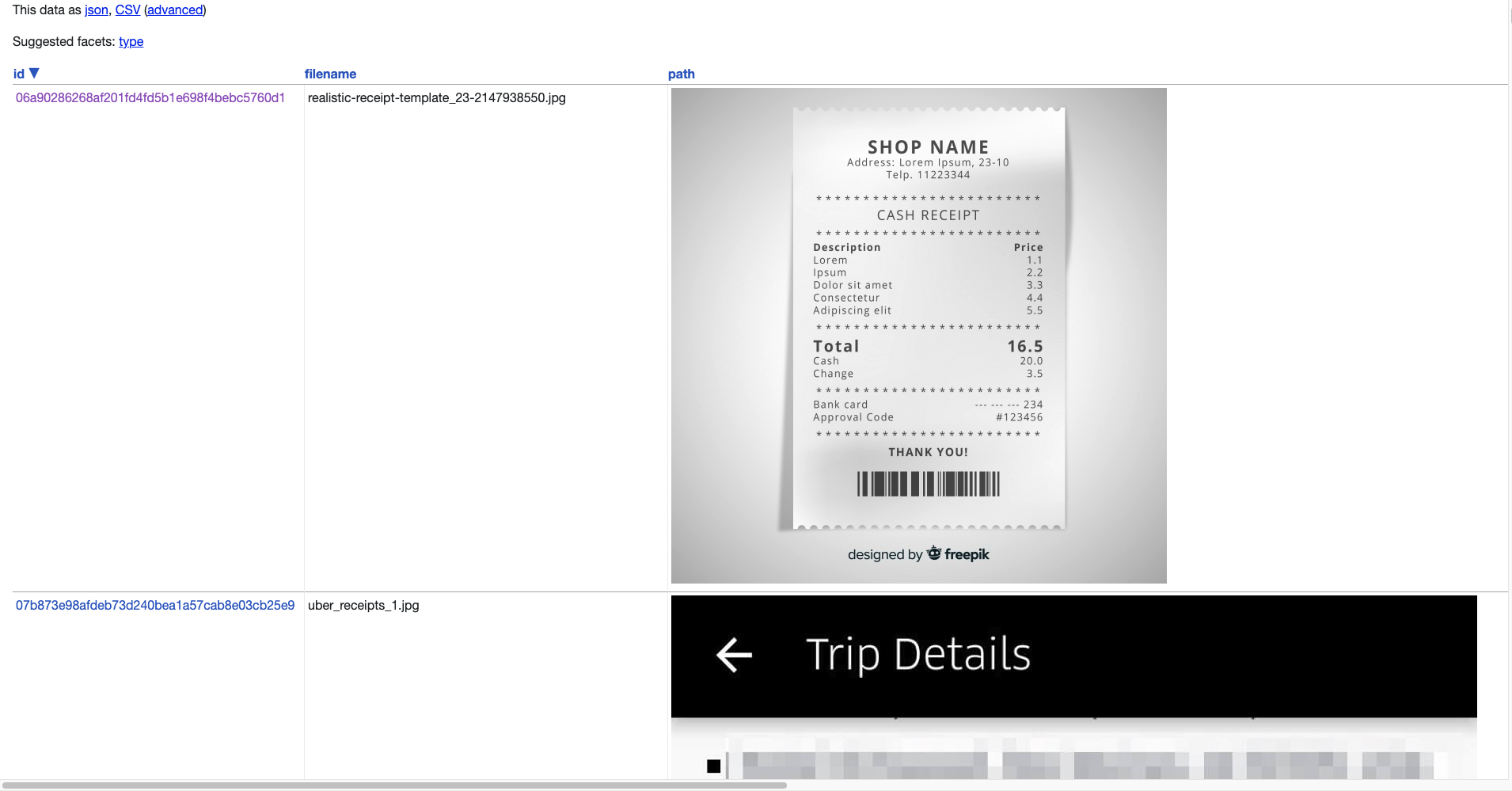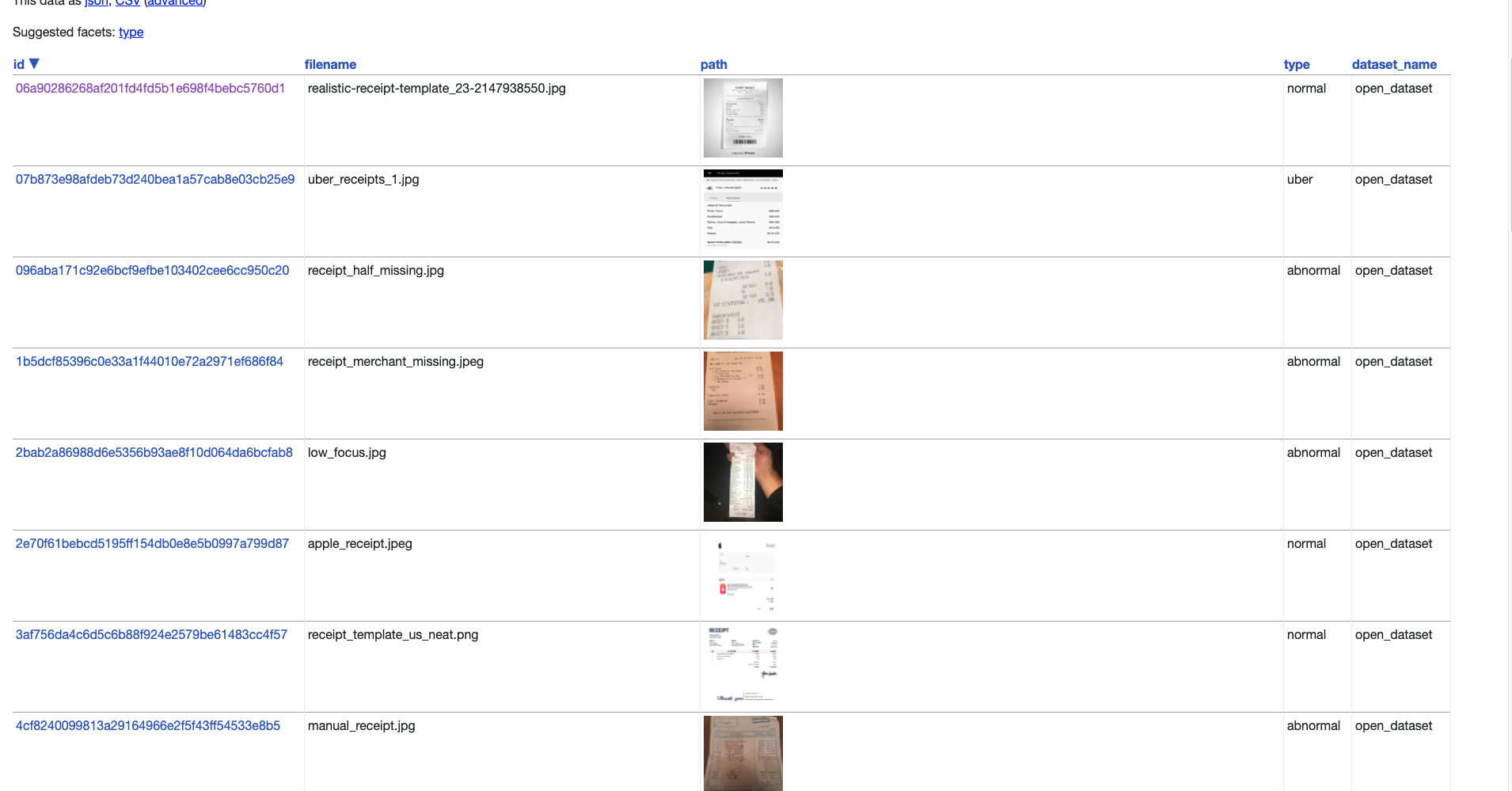Datasette python library lets publishing a dataset as a SQLite database and
inspects them using a web browser. The database can store text, numbers, arrays,
images, binary data, and all possible formats. datasette-render-images
lets you save the image in the database and render the image using data-uris.
Sometimes, while publishing the dataset, you may want to store the images in a separate directory for various reasons and include the relative path to the database’s images in the table.
The datasette-render-local-images plugin lets you perform, rendering the images from the local system.
When the cell value is images/train/001_inbox.jpg,
the plugin checks for the path; if the path exists,
the plugin reads the file. Next, checks, whether the file has content,
belongs to one of the image formats, jpg, png, jpeg, and renders the individual cell’s image.
Below is the sample image.

The sample image dataset consists of table books with
four columns id, name, author, author_image.
author_image column contains the path to the respective book authors’ image.
The first four columns had images satisfying image display criteria.
The next three rows are an example of failure cases.
No Exit book author image path doesn’t exist; hence plugin displays the exact value.
Dummy book author image path exists, but the content is empty; thus, unprocessed the value.
Scalable_Vector_Graphics book author image is the format is SVG; therefore, the unprocessed value.
Sometimes the dataset images can be of different sizes, so you may want to view all the images in the same dimensions. You can modify the image dimension in metadata.json.
The configuration JSON looks like below one.
{
"plugins": {
"datasette-render-local-images": {
"height": 150,
"width": 150
}
}
}
The plugins configuration dictionary takes a plugin name as a key and configuration for the plugin as a dictionary.
In our case, the plugin name is datasette-render-local-images, and
the two configurable options height and width.
As of now, the plugin supports only two configurable options.
Using it in a project
I have a dataset on receipts stored in the table input.
Here is a sample out of a row using sqlite-utils.
$sqlite-utils query ocr.db "select * from input limit 1"
[{"id": "b2df4606e368783ff2d024d0e4e58a620dacfa71",
"filename": "uber_receipts_with_driver_name.png",
"path": "/Users/user/code/work/open_dataset/uber/uber_receipts_with_driver_name.png",
"type": "uber",
"dataset_name": "open_dataset"}]
The input table contains five columns, id, filename, path, type, and dataset_name.
Let’s see the output with and without plugin.
Install the plugin
$datasette install datasette-render-local-images==0.0.7
...
Successfully installed datasette-render-local-images-0.0.7
Run the datasette
$datasette ocr.db
Screenshot of the input table

The images take their height and width and not compact to view.
Let’s set the default height and width.
Configure height and width in metadata.json
{
"plugins": {
"datasette-render-local-images": {
"height": 100,
"width": 100
}
}
}
Run datasette command again
$datasette ocr.db -m metadata.json
Screenshot of the input table

You can play around with different height and width.
Of course, you can Photo Zoom Plus or any other extension to zoom the image
while hovering over the image to see the image in full size.
You can report issues, bug, or feature request in the project github repo
Links from the post:
- Datasette Project Docs - https://docs.datasette.io
- Datasette render local images GitHub - https://github.com/kracekumar/datasette-render-local-images/
See also
- Python Typing Koans
- Model Field - Django ORM Working - Part 2
- Structure - Django ORM Working - Part 1
- jut - render jupyter notebook in the terminal
- Five reasons to use Py.test

This work is licensed under a Creative Commons Attribution-ShareAlike 4.0 International License.